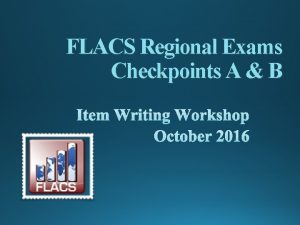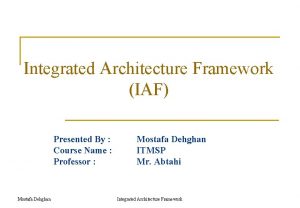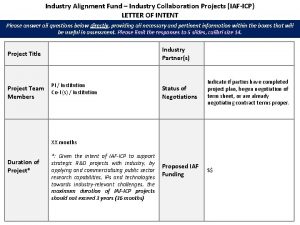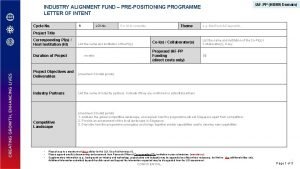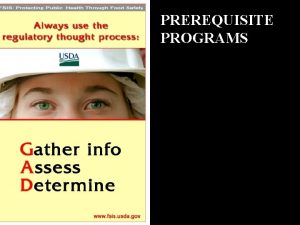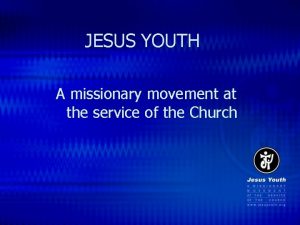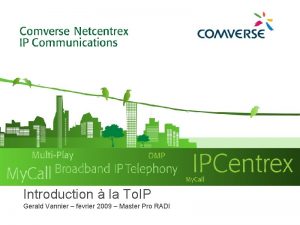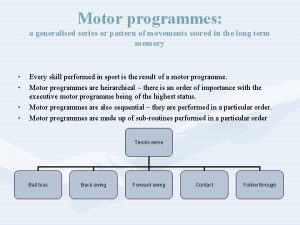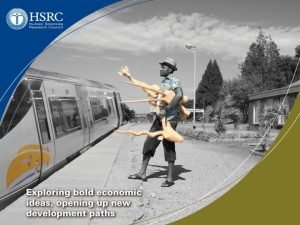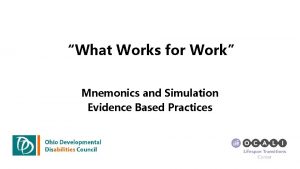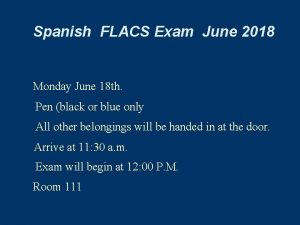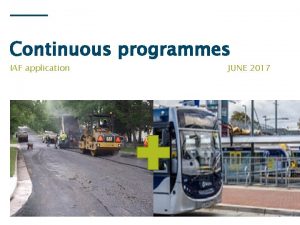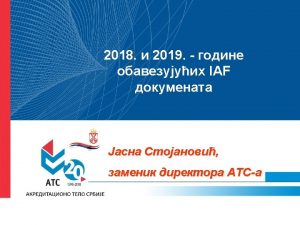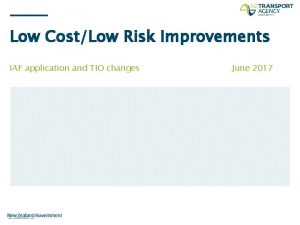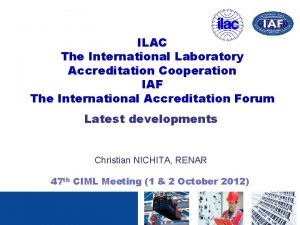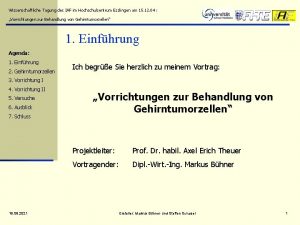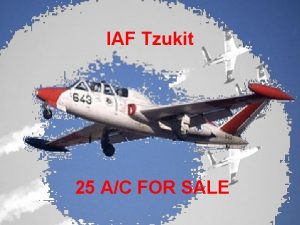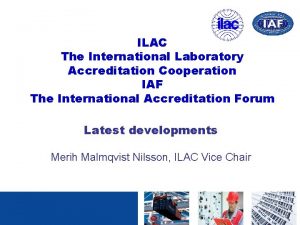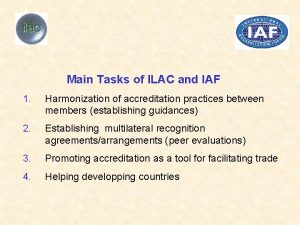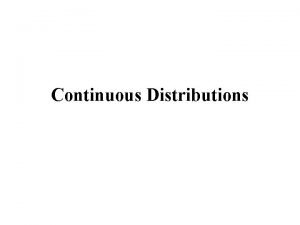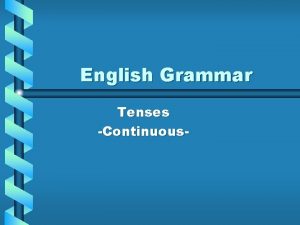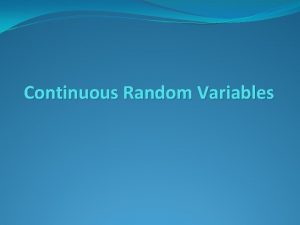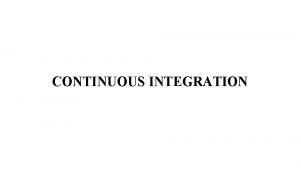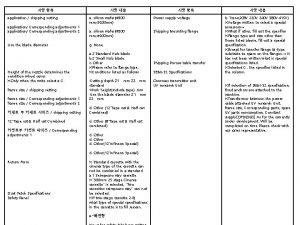Continuous programmes IAF application JUNE 2017 Continuous programmes





























- Slides: 29

Continuous programmes IAF application JUNE 2017

Continuous programmes (draft IAF application) Points for discussion: Definition of continuous programmes The draft IAF in relation to programmes Timelines : continuous programmes approval process

Overview of continuous programmes • A continuous programme is a group of activities, relating to existing assets and services, delivered on an on-going basis from one NLTP to the next to maintain an adequate level of service. • NLTP funding for continuous programmes is considered as a single bid for each three year NLTP period. • The level of funding support necessary is determined via discussion and negotiation between the Transport Agency and investment partner involved.

Types of continuous programmes A continuous programme and its group of activities relate to one of the following: • Road maintenance (maintenance, operations and renewal of existing assets and levels of service) • Public transport (existing services and operational amenities) • Road safety promotion

Maintenance programmes • Core programme • • Eligible works within an investment partner’s roading programme of maintenance work required to achieve or maintain a pre-determined level of service • Based on AMP and supporting information • Should be negotiated and refined through until final submission Enhanced programme: • Addresses significant CLo. S gaps through enhanced maintenance scope / practice. • Should demonstrate a need for change in investment to address a significant gap in CLo. S for the GPS priorities under the IAF criteria for a High Results alignment rating. • Note: Major gaps in CLo. S requiring capital investment are addressed through the improvements activity classes.

Key Principles • Major gaps in service level requiring capital investment are addressed through the improvements activity classes, e. g. : • Adding capacity to achieve travel time reliability • When a road / road feature requires significant change in configuration to move from the standard for one category of classification to a higher standard for another. • A Maintenance programme can address service level gaps through enhanced maintenance practise, e. g. : • Improving TTR through better traffic management, customer info, etc (the TOCs) • Improving resilience through proactive maintenance • Justified additional programme scope /scale

Mock-up of TIO Work Categories screen

Continuous programmes for public transport • Refers to existing services. • Can include a reconfigured network, resulting in an expected increase in CLo. S within the existing funding envelope. • Service improvements that result in an increased CLo. S at an increased annualised cost* must be funded separately, as improvements**. • Discussion with the Transport Agency may be required as to how best to carry this out.

Continuous programmes for road safety promotion • Relate to promotion, education and advertising activities that promote the safe use of the land transport network. • Treated as continuous programmes to give our partners surety of ongoing funding. • Majority of programmes <$1 M, so streamlined approach to assessment utilised.

The draft IAF in relation to programmes Refresher: • Results alignment supersedes strategic fit • Cost and benefit appraisal still required for programmes • Effectiveness component no longer part of the assessment In addition: • Increased emphasis and transparency of the business case approach and the adoption of the principles related to this. • Elements of the current effectiveness are considered in the Business Case Approach and also via Results alignment

Results alignment for continuous programmes The proposed, general approach for programmes is the following: • Default results alignment rating for programmes will be low • A medium rating is provided where the programme demonstrates it will (or already does) deliver some or all of the priority result areas in the GPS or addresses an identified gap in meeting appropriate customer levels of service. • A high results alignment identifies a significant gap in meeting appropriate customer levels of service, or contributes and supports economic growth and productivity. *

Cost and benefit appraisal for continuous programmes • Cost and benefit analysis for a continuous programme is not new • Primarily done via reviewing: • The cost effectiveness of the programme’s activities -one NLTP to the next; • Trends of programmes over time and benchmarked to other similar investment partners, via reviewing supporting analytics and spreadsheets (e. g. the cost and benefit appraisal template for public transport) Note: For both maintenance and public transport there have been further enhancements to the available tools.

Cost and benefit appraisal for programmes (cont. ) For maintenance, includes such things as: Verifying supporting data Comparison to others (benchmarking)

Cost and benefit appraisal for programmes (cont. ) another example for maintenance

Cost and benefit appraisal for programmes (cont. ) For PT, includes such things as the cost benefit appraisal template:

The Business Case Approach for programmes Core programmes - Do not require a separate business case but require the BCA principles to be applied to key planning documentation. (such as the AMP, the RPTP and RLTPs, etc. ) * An increased level of service: -For maintenance: reflected via an enhanced programme. -For PT (an additional CLo. S @ >$): requires a separate funding application and potentially a stand alone business case.

Business Case Approach • Relationship of the BCA to the IAF: • The business case principles and the IAF are clearly linked • Assessment of the business case is the ‘gateway’ (assessment of documentation and the alignment to business case principles) Business Case Approach Expected to be covered via planning documentation (RLTP, AMP and/or RPTP RLTP & AMP, etc) Assessment of business case Investment Assessment Framework Pass/Rework/Fail Results Alignment Cost-Benefit Appraisal

Assessment of Business Case – question level Each question will be individually assessed and scored as the following: 0 –unacceptable (significant issues requiring conditional support) 1 –basic requirements (recognition of some issues) 2 –acceptable/ balanced (minimal gaps/ risks) 3 –robust/ advanced (completed/ fit for purpose)

Assessment of Business Case - summary level After assessing each question, the Transport Agency will assess the investment proposal in its entirety. Assessment Outcome All Proposals (Continuous programmes & Improvement Activities) Pass The investment partner has provided a proposal that is robust and meets the expectation that the principles of the Business Case Approach have been applied relevant to the phase of the business case

Assessment of Business Case - summary level After assessing each question, the Transport Agency will assess the investment proposal in its entirety. Assessment Outcome Improvement Activities Rework The Transport Agency considers that the investment partner is required to complete further work to robustly answer an Assessment of the Business Case question Investment partners will need to complete all rework required to achieve a Pass assessment, or a combination of Pass and Rework assessments by negotiation, before a proposal progresses to the IAF phase Continuous Programmes Proposals may proceed so long as an agreed time-bound action plan is established by the investment partner (in this context, either an AO or the Transport Agency) to address the question requirements that will ultimately lead to achieving a Pass assessment

Assessment of Business Case - summary level The outcome of the assessment of the individual questions will inform and influence the overall pass, rework or fail of the investment proposal, but it may not determine the funding outcome. Assessment Outcome Improvement Activities Continuous Programmes Fail The investment partner has not provided the necessary evidence in its business case supporting the investment proposal, and has signalled that no further work is currently planned to complete the required evidence The Transport Agency determines that the business case is not sufficiently robust to support the investment proposal and is assessed as a Fail The proposal does not proceed The Transport Agency may decide to to the IAF phase until the progress the proposal for funding, investment partner agrees to and will define conditions and the address the business case potential funding level, if any deficiencies, and the business case is then reassessed as a Rework or Pass

Assessment of Business Case – “TIO look”

Programme profile ratings and application • The outcome of the Assessment of Business Case informs our confidence in the robustness of the funding proposal. • The two assessment factors of Results Alignment and Cost-Benefit Appraisal are brought together to form an assessment profile which determines a proposal’s priority, where the ranking is based on: • Results alignment: meeting the desired results of the investment strategy • Cost benefit: achieving the desired results in the most efficient way

Programme profile ratings and application (cont. ) Funding levels for programmes will be informed by the profile and will take account of the Transport Agency’s intervention hierarchy: Note - This table is draft and may change pending the final GPS.

Timelines: Continuous Programmes • Programme approval occurs at the time of NLTP adoption • Approval typically* granted across the three year NLTP period • Three stage process to the submissions for Continuous Programmes for the 2018 -21 NLTP: • • Initial bids – before 31 August 2017 Firm bids – before 20 October 2017 Final bids – before 16 December 2017 Indicative allocations expected mid-April 2018

Continuous Programmes – initial bids • Due by 31 August 2017 • Signal any change to strategic environment • Sufficient detail to determine whether what is being proposed is a continuation of an existing programme, or a significant service level change • A ‘first cut’ of funding requirements across each work category of the programme

Continuous Programmes – firm bids • Due by 20 October 2017 • A consolidated programme is required showing where the necessary information can be found (e. g. AMP, RPTP etc. ) • Review of the Assessment of Business Case with a Transport Agency representative, to ensure all questions are assessed* • Full disclosure of the proposed funding which clearly identifies: • Core programme and, if applicable, • Enhanced programme (maintenance) or • Separate funding application for Improvements - change in service level (PT)

Continuous Programmes – final bids • Due by 16 December 2017 • Completion of the Assessment of Business Case with Transport Agency representative and all questions assessed as a pass or rework • Proposals assessed as a fail will require negotiation and agreement on conditions and potential funding levels; • Transport Agency will provide rationale and implications of any changes from firm bid.

Questions
 June 2015 flacs exam answers
June 2015 flacs exam answers Integrated architecture framework
Integrated architecture framework Iaf architecture
Iaf architecture Iaf icp
Iaf icp Iafpp
Iafpp Future continuous
Future continuous Past simple future
Past simple future Components of primary health care
Components of primary health care Overview funding programmes
Overview funding programmes Talent mobility programmes
Talent mobility programmes National health programmes related to child health
National health programmes related to child health Fictional programmes
Fictional programmes Designing brand marketing programs
Designing brand marketing programs Mental health policy, plans and programmes michelle funk
Mental health policy, plans and programmes michelle funk Ipcat2
Ipcat2 Eps niveau 3
Eps niveau 3 Agriseta skills programmes
Agriseta skills programmes Prerequisite program haccp
Prerequisite program haccp Programme tlvision de ce soir
Programme tlvision de ce soir Tlvision ce soir
Tlvision ce soir Agriseta skills programmes
Agriseta skills programmes Activité vivre ensemble maternelle
Activité vivre ensemble maternelle Jesus youth 6 pillars malayalam
Jesus youth 6 pillars malayalam Xcap gestion des programmes et dnc
Xcap gestion des programmes et dnc Motor programmes
Motor programmes Ifric 13 customer loyalty programmes
Ifric 13 customer loyalty programmes Public employment programmes
Public employment programmes 30 days has september
30 days has september Flacs checkpoint b spanish exam june 2018 answers
Flacs checkpoint b spanish exam june 2018 answers June 2007 physics regents
June 2007 physics regents
